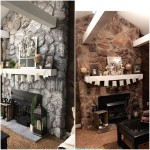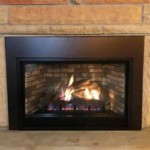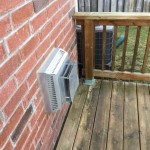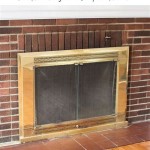Portable Wood Fireplaces: A Comprehensive Guide
The allure of a crackling fire, the warmth it provides, and the ambiance it creates are universally appealing. While traditional fireplaces are fixed features within a home, the concept of a portable wood fireplace offers the freedom to enjoy these benefits almost anywhere. This article explores the various aspects of portable wood fireplaces, from their types and benefits to safety considerations and maintenance requirements.
Portable wood fireplaces cater to a range of needs, from camping enthusiasts seeking a source of heat and cooking fuel to homeowners desiring a flexible outdoor heating option. The market offers a diverse selection of models, each with its own characteristics, advantages, and disadvantages. Understanding these nuances is crucial in selecting a portable wood fireplace that aligns with specific requirements and intended use.
Types of Portable Wood Fireplaces
The term "portable wood fireplace" encompasses several distinct designs. Each type offers a unique combination of portability, heating capacity, and fuel efficiency. Common categories include chimineas, fire pits with screens, and portable wood stoves. Understanding their specific features is vital for making an informed purchasing decision.
Chimineas: These freestanding structures are typically made from clay or cast iron and feature a narrow chimney for directing smoke upwards. Chimineas are admired for their aesthetic appeal and ability to radiate heat efficiently. Their enclosed design helps contain embers and sparks, making them a relatively safe option for outdoor use. However, chimineas can be heavy and fragile, limiting their portability. The clay versions are particularly susceptible to cracking if exposed to sudden temperature changes or excessive moisture.
Fire Pits with Screens: Fire pits are open-air receptacles designed to contain a wood fire. Portable models typically feature a metal bowl or basin supported by legs, allowing for easy relocation. A wire mesh screen is often included to prevent sparks and embers from escaping. Fire pits offer a panoramic view of the flames and provide ample radiant heat. They are generally lighter and more portable than chimineas. However, the open design requires careful monitoring to prevent uncontrolled fires and necessitates a large, open area to allow for proper ventilation of smoke.
Portable Wood Stoves: These stoves are designed for maximum heat output and fuel efficiency. They are typically constructed from steel or cast iron and feature a closed combustion chamber with a flue pipe for venting smoke. Portable wood stoves are often used for heating small spaces, such as tents, cabins, or workshops. While more expensive and heavier than chimineas or fire pits, these stoves offer superior heating performance and are highly suitable for situations where warmth is a primary concern. The presence of a door and damper allows for better control over the burning process, resulting in more efficient fuel consumption and reduced smoke emissions.
Benefits of Using Portable Wood Fireplaces
The appeal of portable wood fireplaces extends beyond their aesthetic charm. They offer a number of practical benefits that make them a desirable option for various scenarios. These advantages range from providing warmth and cooking capabilities to enhancing the ambiance of outdoor spaces.
Versatile Heating Solution: Portable wood fireplaces offer a flexible way to provide supplemental heat in outdoor settings. They are ideal for warming patios, decks, or campsites during cooler evenings. The radiant heat emitted by the fire creates a comfortable and inviting atmosphere, extending the enjoyment of outdoor spaces into the shoulder seasons. Unlike electric heaters, portable wood fireplaces do not require an external power source, making them a practical option for remote locations.
Outdoor Cooking Capabilities: Many portable wood fireplaces can be used for cooking. Fire pits with grilling grates allow for preparing barbecued meals over an open flame. Portable wood stoves can be equipped with cooktops for simmering, frying, or boiling. The wood-fired cooking method imparts a distinct flavor to food, enhancing the culinary experience. Using a portable wood fireplace for cooking can also reduce reliance on propane or charcoal grills, potentially saving money and reducing environmental impact.
Ambiance and Aesthetic Appeal: The flickering flames and crackling sounds of a wood fire create a unique ambiance that is difficult to replicate with other heating methods. Portable wood fireplaces can transform an ordinary patio into a cozy outdoor living space. The visual appeal of the fire adds a touch of rustic charm to any setting, enhancing the overall aesthetic. This ambiance is especially valuable for social gatherings, creating a warm and inviting atmosphere for friends and family.
Emergency Preparedness: In the event of a power outage, a portable wood fireplace can provide a crucial source of heat and a means for cooking. This is particularly important in regions prone to severe weather events. Having a backup heating and cooking option can significantly improve comfort and safety during emergencies. Storing a supply of firewood alongside the portable fireplace ensures that it is ready for use when needed.
Safety Considerations for Portable Wood Fireplaces
While portable wood fireplaces offer numerous benefits, it is imperative to prioritize safety when using them. Improper usage can lead to property damage, personal injury, or even uncontrolled wildfires. Adhering to safety guidelines and taking necessary precautions are crucial for ensuring a safe and enjoyable experience.
Clearance and Placement: Portable wood fireplaces should be placed away from flammable materials such as trees, shrubs, fences, and overhanging structures. Maintaining a safe clearance distance is essential to prevent accidental fires. The manufacturer's instructions typically specify the minimum required clearance. It is also important to ensure that the fireplace is placed on a level, non-combustible surface, such as concrete, stone, or gravel. Avoid placing the fireplace directly on grass or wooden decks, as embers or sparks can ignite these surfaces.
Supervision and Containment of Embers: A fire should never be left unattended. A responsible adult should always be present to monitor the fire and ensure that it remains contained. Embers and sparks can easily escape from open fire pits, potentially igniting nearby materials. Using a fire screen can help prevent this. The screen should be properly sized to cover the entire opening of the fire pit and should be free of any holes or tears. It is also advisable to keep a bucket of water or a fire extinguisher nearby in case of emergencies.
Proper Ventilation: Burning wood produces carbon monoxide, a colorless and odorless gas that can be deadly in high concentrations. Portable wood fireplaces should only be used in well-ventilated areas. Never use a portable wood fireplace indoors or in enclosed spaces such as tents or garages. Ensure that there is adequate airflow to allow for the proper dissipation of smoke and fumes. If using a portable wood stove with a flue pipe, ensure that the pipe is properly installed and vented to the outside.
Safe Fuel Handling: Only use dry, seasoned firewood in portable wood fireplaces. Green or wet wood produces excessive smoke and burns inefficiently. Store firewood in a dry, covered location away from the house or other flammable structures. When handling firewood, wear gloves to protect your hands from splinters and dirt. Avoid using accelerants such as gasoline or kerosene to start a fire, as these can cause dangerous flare-ups. Use a commercially available fire starter or kindling instead.
Local Regulations and Restrictions: Before using a portable wood fireplace, check local regulations and restrictions regarding open burning. Some areas may have burn bans in effect during periods of high fire danger. Others may require permits for outdoor fires. Adhering to local regulations is essential to avoid fines or other penalties.
By adhering to these safety guidelines, users can minimize the risks associated with portable wood fireplaces and enjoy their warmth and ambiance responsibly.
The selection of a portable wood fireplace should consider factors such as intended use, portability requirements, and budget constraints. Regularly inspect the fireplace for signs of wear and tear, such as rust, cracks, or loose components. Proper maintenance ensures that the fireplace remains safe and functional for years to come. Understanding the different types, benefits, and safety considerations outlined in this article will empower consumers to make informed decisions and enjoy the ambiance of a wood fire safely and responsibly.

Original Outbacker Stoves Portable Wood Burning Camping

Portable Indoor Wood Burning Fireplace Stove

Portable Stove If Campfire Just Isn T Enough Gearjunkie

4 2kw Wood Burning Stove Portable Fireplace

10 Portable Fireplaces For Petite Places Fireplace Indoor Design
:max_bytes(150000):strip_icc()/__opt__aboutcom__coeus__resources__content_migration__treehugger__images__2015__09__Frontier-200-8b15c3a2c7f4499b83792cc91caf1ec1.jpg?strip=all)
Portable Woodstove Folds Down Heats Up Tents Yurts Tiny Homes

Dweller Tent Stove Camping Fireplace For Hot Wood Burning

24 Inch Tall Portable Electric Wood Stove Fireplace With Flame Effect Freestand

A Tiny Wood Stove Is The Cozy Glow Heater Your Cabin Needs Sunset

Hot Outdoor Portable Folding Cast Iron Fireplace For Camping Stove China And Tent Made In Com
Related Posts








